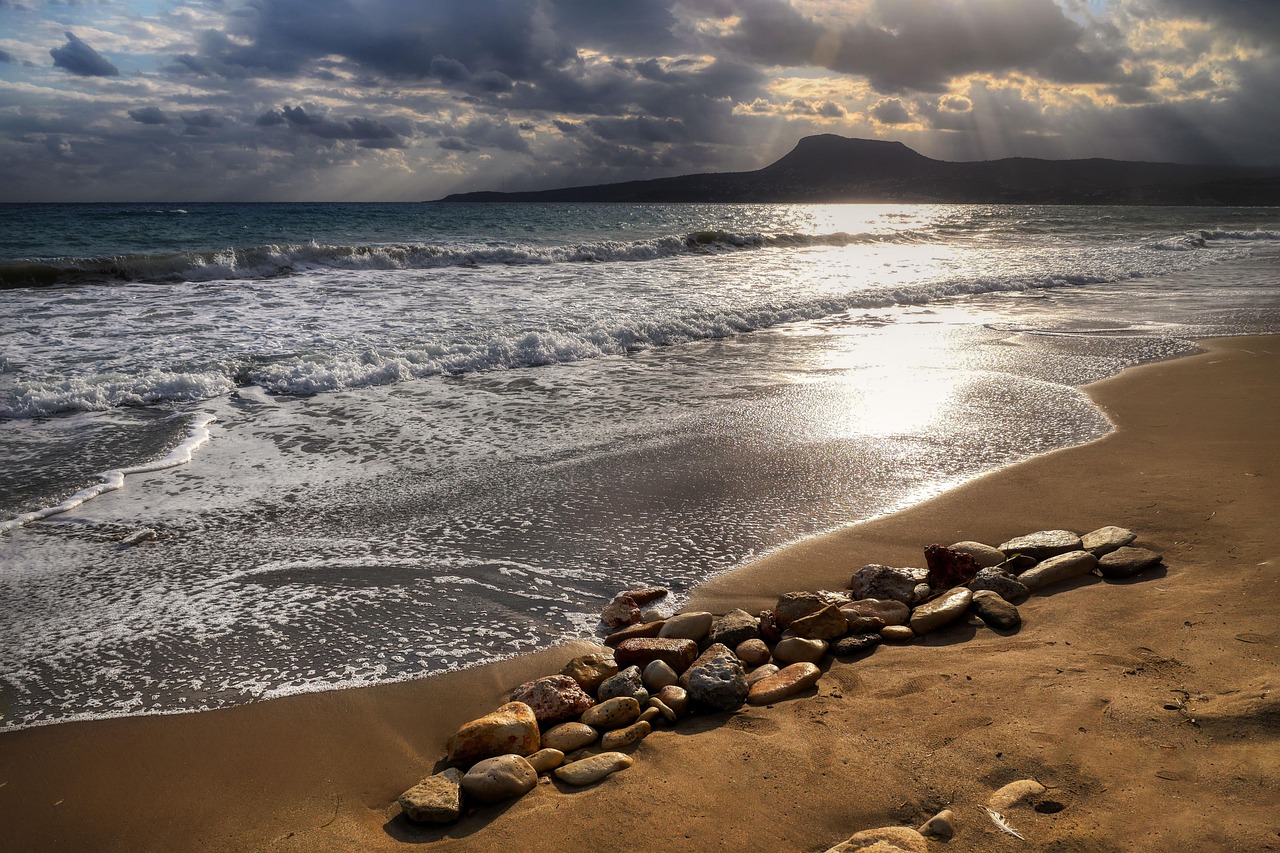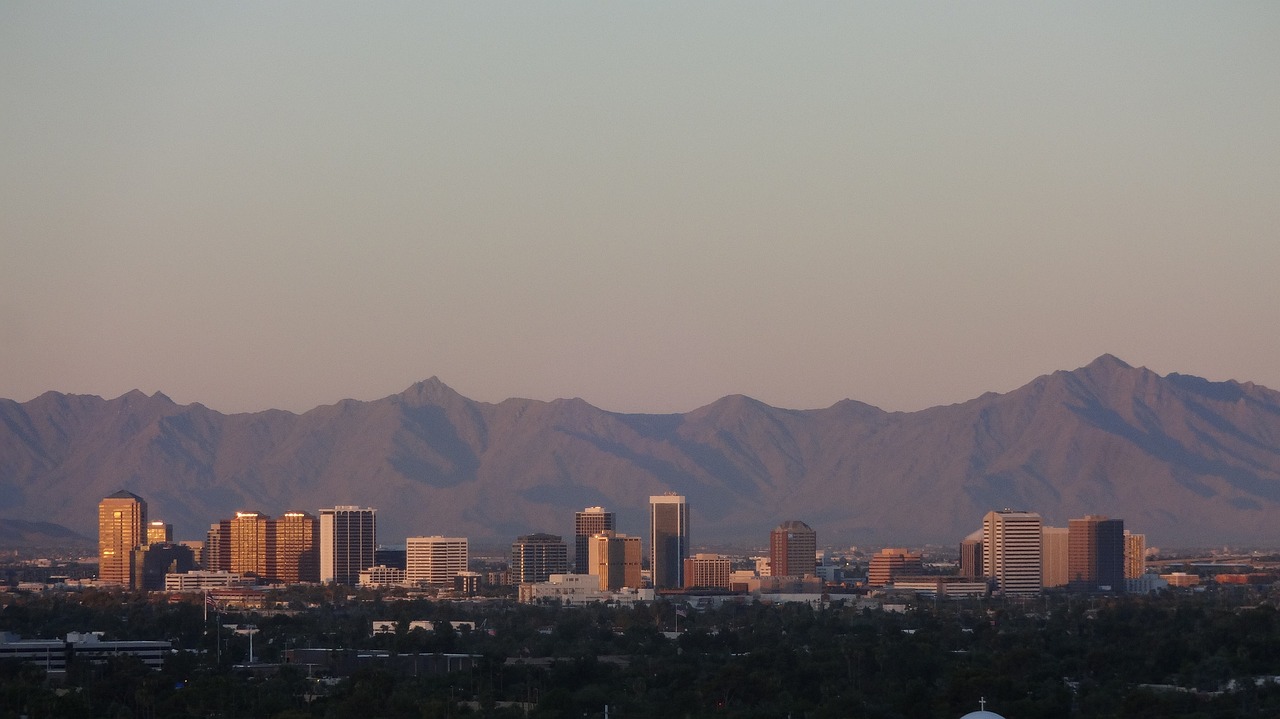
Finding the perfect vacation spot can be hard. Crete, Greece, is a hidden gem in the Mediterranean Sea. This post will show you its beauty, history, and where to have fun. Get ready for an adventure!
Key Takeaways
- Crete is the largest Greek island with a mix of mountains, beaches, and ancient ruins. It has four main regions: Chania, Rethymno, Heraklion, and Lasithi.
- The island enjoys a Mediterranean climate perfect for visiting from May to October. It offers outdoor activities like hiking in Samaria Gorge and beach fun.
- Crete’s history includes the Minoan civilization, Venetian and Ottoman rule, leading up to its union with Greece in 1913.
- Traditional Cretan dishes are part of the healthy Mediterranean diet. Local delicacies include Dakos, Kalitsounia, Gamopilafo, Apaki, and snails.
- Visitors can stay in various towns like Heraklion or Chania. Sustainable travel tips suggest staying at eco-friendly places and supporting local businesses.
Geography and Natural Beauty

Crete, Greece is blessed with diverse geography and natural beauty. From majestic mountains to stunning beaches, the island’s landscape offers a picturesque blend of lush valleys and rugged gorges.
Island morphology
Crete stands out in the Mediterranean for its unique shape and size. It is the largest of the Greek islands, stretching over 160 miles from west to east. Its terrain is a mix of mountains that dive into the sea, creating stunning cliffs and soft slopes leading to sandy shores.
The island has four main regions: Chania, Rethymno, Heraklion, and Lasithi. Each offers diverse landscapes from rugged coastlines to fertile plains.
The island’s natural beauty is marked by high mountain ranges crossing from west to east. These include the White Mountains or Lefka Ori, Psiloritis (Mount Ida), where myth says Zeus was born, and Dikti Mountain.
Between these towering peaks lie hidden plateaus like Lassithi and Omalos, famous for their picturesque windmills and deep gorges such as Samaria Gorge – one of Europe’s longest canyons inviting hikers from around the world.
Mountains, gorges, and valleys
Crete is home to some stunning mountains, deep gorges, and lush valleys. The White Mountains boast peaks over 2,400 meters high, offering breathtaking views. These mountains are also where you find the famous Samaria Gorge.
It’s one of Europe’s longest at 16 km long. Hikers love this place for its wild beauty and unique flora and fauna.
The island’s rugged landscape doesn’t stop there. Imbros Gorge and Agia Irini Gorge add to Crete’s charm with their own scenic paths that invite nature lovers for exploration. Then there are the fertile valleys like Lasithi Plateau, surrounded by mountains and dotted with windmills.
This area is perfect for cycling or a leisurely drive through small villages.
Next up: beaches and surrounding islands that offer endless sun, sand, and sea adventures.
Beaches and surrounding islands
Crete is famous for its beautiful beaches. They range from sandy shores to hidden coves. Each beach has its own charm, offering crystal clear waters and stunning views of the Mediterranean Sea.
Some popular ones include Elafonissi with pink sand, and Balos Lagoon that looks like a paradise.
The island also serves as a gateway to explore smaller islands around it. Places like Gramvousa Island are perfect for adventure lovers. Here, people can visit ancient ruins and enjoy snorkeling in clear blue waters.
These surrounding islands add more excitement to Crete’s already rich coastal experience.
Climate and Best Time to Visit
Crete enjoys a Mediterranean climate with hot, dry summers and mild, wet winters. The island receives an average of 300 days of sunshine per year, making it a perfect year-round destination for travelers seeking warmth and outdoor activities.
The best time to visit Crete is from May to October when the weather is sunny and warm, ideal for relaxing on the beaches and exploring the island’s natural beauty. During these months, temperatures range from 70°F (21°C) in May to 86°F (30°C) in July and August.
The shoulder seasons of spring (March-April) and autumn (September-October) are also excellent times to visit as temperatures are comfortable for sightseeing and outdoor adventures while avoiding the peak tourist crowds.
However, visitors should bear in mind that some coastal businesses may close during winter months as tourism slows down. Overall, Crete offers diverse experiences throughout the year due to its favorable climate conditions.
History and Cultural Heritage
Explore Crete’s rich history, from the ancient Minoan civilization to its periods under Venetian and Ottoman rule, culminating in its union with Greece. Discover the island’s unique cultural heritage on every corner.
Minoan civilization
The Minoan civilization, flourishing on Crete during the Bronze Age from around 3000 to 1100 BCE, was one of the earliest advanced societies in Europe. Known for their impressive palace complexes and intricate frescoes, the Minoans were skilled artisans and seafarers.
The Palace of Knossos, a significant archaeological site on Crete dating back to around 2000 BCE, offers an insight into their sophisticated architecture and engineering prowess.
At its peak, the Minoan civilization boasted a population estimated at over 100,000 people, setting it apart as one of the most populous and prosperous cultures of its time. Their extensive trade network extended throughout the Mediterranean region, enhancing their influence on surrounding societies through cultural exchange and economic dominance.
Today, visitors can explore the remnants of this remarkable civilization at various archaeological sites across Crete while marveling at their exceptional artistry and technological achievements.
Venetian and Ottoman periods
Crete has a rich history shaped by the Venetian and Ottoman periods. From the early 13th century to 1669, Crete was under Venetian rule, leaving its mark on the island’s architecture and culture.
The iconic Venetian fortresses stand as testament to this era, with prime examples found in Heraklion and Rethymno. In 1669, Crete fell to the Ottomans until it was finally unified with Greece in 1913 after a long period of struggle for independence.
This tumultuous history is visible in Crete’s diverse cultural heritage and adds depth to its archaeological sites, such as Knossos. It also influences Cretan cuisine which showcases a blend of Mediterranean and Middle Eastern flavors due to centuries of multi-cultural influence.
These historical legacies provide enriching experiences for visitors who want to delve into the island’s remarkable past.
Union with Greece
After the end of the Ottoman rule, Crete was officially united with Greece on December 1, 1913. This marked a significant historical moment for the island and solidified its place within modern Greece.
The union with Greece brought a new era of governance and cultural integration to Crete, further intertwining its identity with that of mainland Greece.
During the union, efforts were made to integrate Crete into the administrative and political structure of the Greek state. This included establishing governmental institutions and incorporating Cretan representatives into national decision-making bodies.
The unity also strengthened ties between Crete and other regions in Greece, fostering economic development and infrastructural improvements across the island.
The union with Greece has left an enduring impact on Crete’s history and cultural heritage, shaping its modern identity as an integral part of the Hellenic Republic.
Top Attractions in Crete
Discover the ancient ruins of the Palace of Knossos, an iconic part of Greek history. Roam around Chania’s old town and harbor for a taste of traditional Greek culture and charm.
Archaeological sites and museums
Crete is home to numerous archaeological sites and museums that offer a fascinating glimpse into its rich history and cultural heritage. Here are some of the must-visit attractions:
- The Palace of Knossos: This ancient Minoan palace is a significant archaeological site, showcasing the remarkable architecture and advanced civilization of the Minoans.
- Heraklion Archaeological Museum: One of the most important museums in Greece, it houses an extensive collection of Minoan art and artifacts, providing valuable insights into Crete’s early civilization.
- Chania Archaeological Museum: Exhibiting a diverse range of historical artifacts, this museum offers a comprehensive overview of Crete’s past, including Roman, Byzantine, and Venetian periods.
- Phaistos Archaeological Site: Known for its well-preserved Minoan ruins, this site allows visitors to explore ancient structures and gain an understanding of Minoan daily life.
- Historical Museum of Crete: Providing a broad perspective on Crete’s history from early Christian times to the modern era, this museum features exhibits on traditional crafts, Byzantine art, and the Cretan resistance during World War II.
These sites and museums serve as invaluable resources for understanding Crete’s cultural significance and its enduring influence throughout the ages.
Chania’s old town and harbor
Chania’s old town sits on Crete’s northwest coast, overlooking the Mediterranean Sea and is an amalgamation of Venetian, Turkish, and Greek architecture with narrow streets filled with local shops, restaurants and historical sites.
The charming Venetian harbor is a hub of activity where you can watch the fishing boats come in, enjoy fresh seafood at waterfront tavernas or explore the historic lighthouse.
The area dates back to Minoan times and was influenced by various civilizations over time. Besides its historical significance, Chania’s old town offers picturesque views and a lively ambiance that makes it a must-visit destination in Crete.
It’s a blend of tradition and modernity exemplified through its cultural heritage sites. Exploring this enchanting area provides an immersive experience into Crete’s captivating history melded with everyday life.
Moving forward to “The Palace of Knossos,” let’s discover another fascinating piece of Crete’s past.
The Palace of Knossos
Chania’s old town and harbor offer a glimpse into the island’s history, but to truly immerse yourself in Crete’s ancient past, don’t miss visiting the Palace of Knossos. This significant archaeological site dates back to the Minoan civilization, around 1900 BC.
It is known as Europe’s oldest city and displays an impressive complex with over 1,300 rooms. The site showcases advanced architectural features for its time, such as intricate drainage systems and grand staircases.
As you explore the palace ruins, you’ll marvel at fascinating frescoes depicting scenes from daily life in ancient Crete and encounter the legendary myths associated with King Minos and the Labyrinth.
The Palace of Knossos plays a crucial role in understanding Minoan culture and society. Its historical significance cannot be overstated; it gives us insight into one of European civilization’s earliest societies – providing invaluable evidence of early urbanization, social organization, religion, trade networks, arts & crafts development amongst others while showcasing ancient engineering prowess that baffles modern scientists.
Outdoor Activities and Adventures
Explore the rugged beauty of Crete through exhilarating hikes in places like Samaria Gorge. Engage in a variety of water sports and beach activities on the enchanting coastline for an unforgettable adventure.
Hiking in Samaria Gorge
Explore the rugged beauty of Crete by hiking through Samaria Gorge, one of Europe’s longest and most captivating gorges. The gorge stretches for 16 kilometers, with its towering walls reaching up to 300 meters in height.
The journey starts at Xyloskalo, where hikers descend steeply into the gorge before navigating through narrow passages and crossing the meandering stream that runs along the trail.
As you trek through this natural wonder, keep an eye out for rare flora and fauna, including kri-kri (wild goats) and over 450 plant species that flourish in this unique ecosystem.
The highlight of the hike comes at the end when you reach Agia Roumeli on the Libyan Sea coast. Here, you can bask in a well-deserved rest on the beach or explore charming tavernas offering delicious local cuisine.
It’s important to note that Samaria Gorge is typically open for hiking from May to October due to weather conditions and safety concerns during other months. With its breathtaking scenery and physical challenge, a hike through Samaria Gorge promises an unforgettable adventure amidst Crete’s stunning landscape.
Water sports and beach activities
Cuisine and Local Delicacies
Experience a delightful array of traditional Cretan dishes showcasing the richness of the Mediterranean diet. Explore local delicacies that capture the essence of Crete’s exquisite cuisine.
Traditional Cretan dishes
Cretan cuisine offers a delightful mix of flavors and is an essential part of the island’s culture. Here are some traditional Cretan dishes to savor during your visit:
- Dakos: A simple, yet delicious dish made with barley rusk, tomatoes, feta cheese, olive oil, and oregano.
- Kalitsounia: Small pastries filled with soft cheese or savory herbs, a delightful treat often served as a snack.
- Gamopilafo: A wedding rice dish cooked in meat broth, usually served at celebrations and special occasions.
- Apaki: Smoked pork marinated in local herbs and vinegar, offering a unique taste of Cretan culinary tradition.
- Snails (Hohlioi Bourbouristoi): A popular delicacy in Crete cooked with rosemary, vinegar, and salt for a distinctive flavor.
Enjoy these authentic dishes while exploring the beautiful island of Crete!
Mediterranean diet highlights
Traditional Cretan dishes are an integral part of the Mediterranean diet, which emphasizes fresh and locally sourced ingredients such as olive oil, fruits, vegetables, whole grains, and lean proteins.
The diet is known for its health benefits, including reducing the risk of heart disease and improving overall well-being. It also incorporates moderate consumption of dairy products like cheese and yogurt.
The diet is rich in antioxidants from colorful fruits and vegetables like tomatoes, eggplants, and peppers. Olive oil is a staple in cooking and provides essential monounsaturated fats.
Fish is frequently consumed due to Crete’s coastal location, offering omega-3 fatty acids that support heart health. Overall, the Mediterranean diet reflects the cultural emphasis on simple yet flavorful meals that prioritize holistic wellness.
Accommodation and Travel Tips
Looking for a place to stay in Crete? Whether you prefer bustling towns like Heraklion or tranquil spots like Rethymno, there are plenty of options for accommodations. Sustainable travel tip: Consider supporting local businesses and staying in eco-friendly resorts during your visit.
Popular towns for staying: Heraklion, Chania, Rethymno
Looking for the perfect place to stay in Crete? Here are some popular towns for your accommodation needs:
- Heraklion: A bustling city with a rich historical legacy, home to the ancient Minoan ruins of Knossos and a lively waterfront area.
- Chania: A picturesque town boasting a beautifully preserved old town and harbor, offering a blend of history, culture, and stunning Mediterranean views.
- Rethymno: This charming coastal town is known for its Venetian architecture, vibrant nightlife, lovely beaches, and a captivating old town brimming with shops and tavernas.
Sustainable travel tips
Crete offers sustainable travel opportunities for environmentally conscious travelers. Here are some tips to make your visit eco-friendly:
- Opt for eco-friendly accommodations, such as hotels with sustainable practices and low environmental impact.
- Support local businesses and artisans by purchasing souvenirs and goods made in Crete, contributing directly to the local economy.
- Use public transportation or rent bicycles to explore the island, reducing carbon emissions and minimizing traffic congestion.
- Conserve water and electricity by being mindful of your usage, especially in areas where resources may be scarce or strained.
- Respect wildlife and natural habitats during outdoor activities, ensuring that your presence has minimal impact on the environment.
- Dispose of waste responsibly by recycling and properly disposing of trash, minimizing pollution in this beautiful island setting.
Crete’s charm can be enjoyed sustainably through these simple yet impactful actions.
Conclusion
Crete, Greece is a captivating destination with its diverse geography and rich history. From stunning beaches to ancient ruins, this Mediterranean gem has something for every traveler.
Whether indulging in traditional Cretan cuisine or exploring the island’s natural beauty, Crete offers an unforgettable experience.
FAQs
1. What is Crete, Greece known for?
Crete, Greece is famous for its stunning beaches, rich history, and delicious cuisine. It has ancient ruins like the Palace of Knossos and beautiful landscapes that attract many visitors.
2. When is the best time to visit Crete?
The best time to visit Crete is during spring or fall. The weather is warm but not too hot, making it perfect for exploring sights and enjoying outdoor activities without large crowds.
3. What are some popular activities in Crete?
In Crete, you can hike through Samaria Gorge, relax on Elafonissi Beach, or explore charming villages like Chania and Rethymno. You can also enjoy traditional Cretan food at local tavernas.
4. How do I get around in Crete?
You can get around in Crete by renting a car or using public buses which connect major towns and attractions easily. Taxis are also available if you prefer a more direct option to your destination.







Leave a Reply